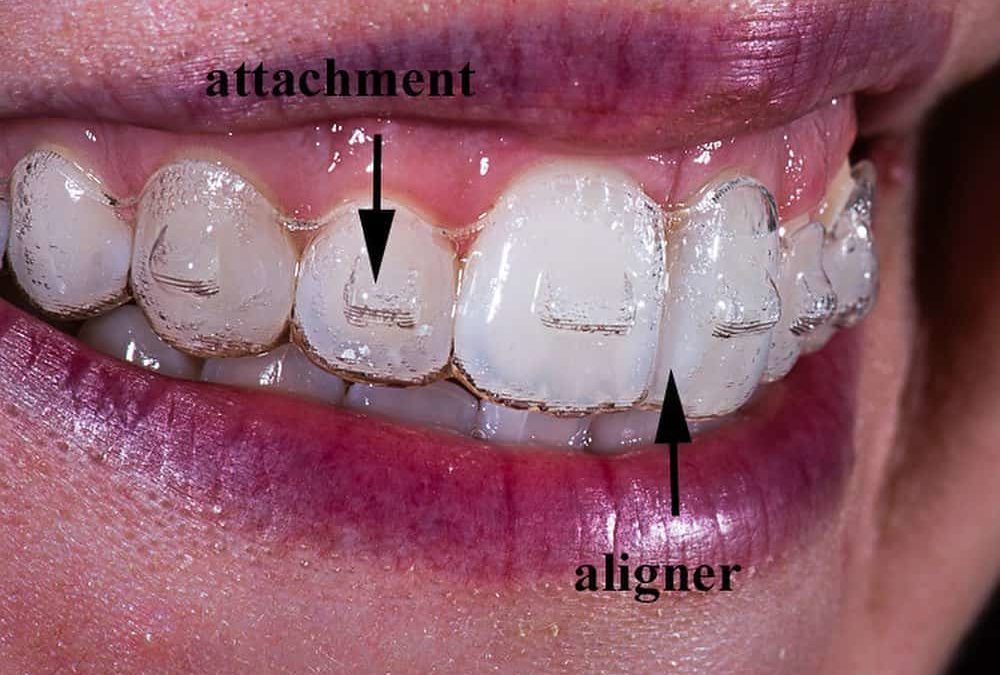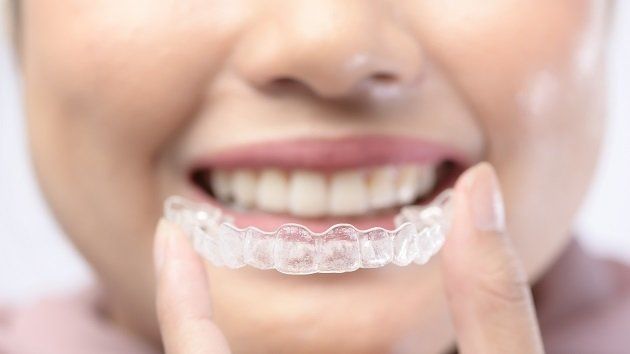The Ultimate Comparison: Invisalign vs. Traditional Dental braces for Adults
The Ultimate Comparison: Invisalign vs. Traditional Dental braces for Adults
Blog Article
Invisalign vs. Standard Braces: Which Option Is Right for You?
When considering orthodontic therapy, the choice between Invisalign and traditional dental braces provides several important variables that warrant cautious examination. Invisalign supplies a very discreet choice with removable aligners, while conventional braces offer an extra noticeable yet efficient solution for serious imbalance.
Summary of Therapy Choices

In contrast, standard dental braces are composed of metal braces and wires that are bound to the teeth. This method uses constant stress in time to achieve positioning. While efficient for complex orthodontic concerns, conventional dental braces require regular sees for modifications and can present challenges in maintaining oral hygiene because of the trouble of cleaning around braces and wires.
Both options have their advantages, and the option commonly rests on certain dental conditions, way of living choices, and patient compliance. Ultimately, getting in touch with an orthodontic specialist is essential for determining one of the most ideal therapy plan customized to private demands. Understanding the nuances of each choice can substantially affect the total success of orthodontic treatment.
Aesthetic Considerations
A significant element influencing the choice between Invisalign and traditional braces is the visual allure each treatment provides. Invisalign aligners are crafted from clear plastic, making them essentially unseen when used. This very discreet look is specifically appealing to teens and adults who may feel uneasy about their orthodontic therapy. The capability to preserve an all-natural smile throughout the positioning procedure can substantially enhance the client's self-confidence in expert and social settings.
In contrast, conventional braces include metal braces and wires, which can be extra recognizable. While improvements in orthodontic innovation have led to the growth of smaller braces and tinted elastics, conventional dental braces still keep a more noticeable profile. For some individuals, the visibility of dental braces may prevent them from seeking necessary treatment.
Eventually, the selection between Invisalign and typical dental braces may pivot on personal choices regarding aesthetics. Patients who focus on discernment often lean towards Invisalign, while those that are less worried concerning presence may choose conventional dental braces. Comprehending the aesthetic implications of each alternative is vital for making an educated decision that straightens with one's way of living and preferences.
Convenience and Convenience

In terms of convenience, Invisalign aligners are removable, allowing individuals to appreciate their favorite foods without limitation and maintain ideal oral health. Cleaning and flossing are streamlined, as the aligners can be secured during these regimens, whereas conventional dental braces call for mindful maneuvering around wires and braces.
In comparison, typical braces require normal adjustments, making them much less practical for those with busy schedules. Generally, the convenience and convenience of Invisalign make it an attractive selection for lots of individuals looking for orthodontic therapy.
Therapy Period and Effectiveness
While both Invisalign and traditional braces work in fixing dental imbalances, the duration of treatment can differ substantially in between the two alternatives. Typically, Invisalign therapy can take anywhere from 12 to 18 months, depending on the intricacy of the case. The clear aligners function by progressively changing teeth right into their preferred settings, and routine follow-ups with an orthodontist assistance make sure progress stays on course.
On the other hand, typical dental braces frequently require a longer dedication, normally ranging from 18 months to three years. This is because of their fixed nature and the use of brackets and cords, which can be much more effective for complicated cases and serious misalignments (Invisalign). The treatment performance of traditional braces is well-documented, as they permit for accurate adjustments and greater control over tooth activity
Ultimately, the choice in between Invisalign and standard braces may rest on both the awaited treatment duration and the specific dental concerns handy. Consulting with an orthodontist is vital, as they can supply customized suggestions based upon private requirements, guaranteeing the chosen approach aligns with preferred outcomes and timeframes.
Cost Contrast and Insurance Alternatives
Expense plays a substantial role in the decision-making procedure for individuals thinking about orthodontic treatment, whether going with Invisalign or traditional braces. On standard, the expense of Invisalign arrays from $3,000 to $8,000, while conventional braces generally set you back in between $2,000 and $6,000. Variables affecting these costs consist of the complexity of the case, the period of treatment, and geographical location.
Numerous oral insurance coverage strategies supply partial protection for orthodontic useful link therapies, but the specifics can differ extensively. Usually, standard braces may be much more frequently covered by insurance coverage plans compared to Invisalign, which some insurance companies classify as a cosmetic treatment.
In addition, numerous orthodontic techniques provide adaptable layaway plan, making both treatment alternatives extra accessible. Patients need to ask about possible financing choices and discount advice rates for ahead of time payments. Examining the overall price, consisting of insurance benefits and repayment strategies, is crucial for making an informed decision that aligns with both visual choices and budget plan considerations.

Final Thought
In summary, the option between Invisalign and standard dental braces depends upon multiple elements, consisting of aesthetic choices, convenience, treatment duration, and expense. Invisalign uses a discreet, detachable alternative that promotes dental hygiene and dietary versatility, while traditional braces may be better for complicated dental problems and often come with a lower price point. Inevitably, examination with an orthodontist is necessary to examine individual circumstances and establish one of the most suitable treatment choice for accomplishing optimum oral placement.
When taking into consideration orthodontic treatment, the choice in between Invisalign and conventional braces provides numerous important aspects that merit mindful analysis.Comparing Invisalign and conventional braces exposes distinct therapy choices for orthodontic correction.While both Invisalign and typical dental braces are efficient in remedying oral misalignments, the duration of therapy can vary substantially between the 2 choices.Cost plays a substantial duty in the decision-making process for people taking into consideration orthodontic therapy, whether choosing for Invisalign or typical braces.In recap, the option in between Invisalign and conventional dental braces hinges on multiple elements, consisting of visual preferences, comfort, blog therapy period, and cost.
Report this page